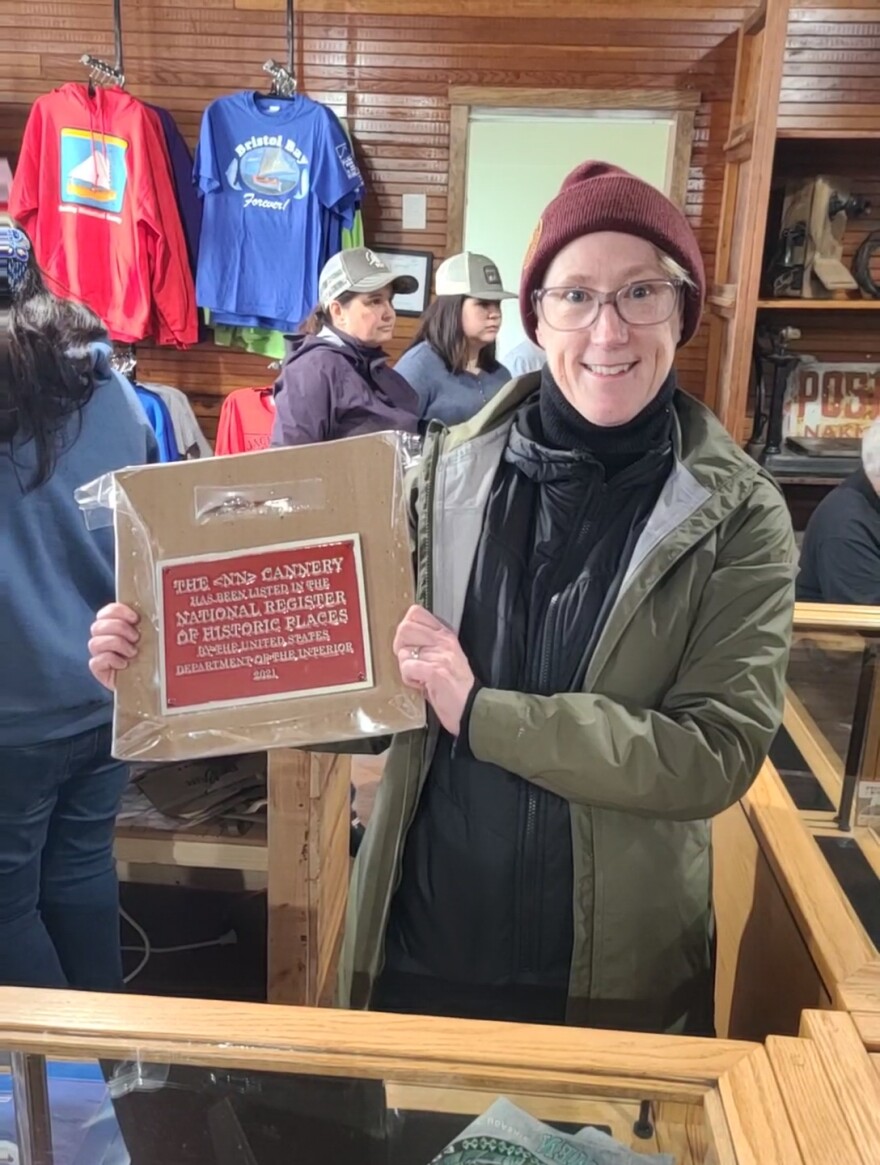The 132-year-old Diamond NN Cannery is Alaska’s longest-running fish processing facility. It operated from 1895 until 2014. It was listed in the National Register of Historic Places last year, August 2021.
That listing was recognized at a dedication ceremony in South Naknek during the 40th annual Bristol Bay Fishtival, held in Naknek July 22-24.
KDLG's Corinne Smith talked to Katie Ringsmuth, the Alaska state historian and the NN Cannery History Project director. Ringsmuth said this is the first Bristol Bay cannery to receive national recognition.
Katie Ringsmuth: Simply put, the Diamond NN Cannery is historically significant for its association with the Bristol Bay, salmon commercial fishery, and also the 54 buildings which are still standing and how they continue to hold the stories of the underrepresented cannery workers who contributed to the industry. So, for example, you still have a building that tells the story of the Chinese workers, some of the very first workers who processed salmon in Bristol Bay. Also in those buildings, you have graffiti that holds the story of the practically forgotten Mexican workers. And later we see the Filipinos make their way in, to the point where we have an entirely new building dedicated to the Filipinos. You have buildings to tell the story of, of segregation, but you also have buildings that tell the story of integration. You have buildings that that mark the arrival of women to the canning industry.
Corinne Smith: When was that?
Ringsmuth: Well, women had always more or less worked in the industry. But in the 1970s, you had laws passed that really forced employers to hire, or they couldn't discriminate essentially based on race, ethnicity, religion and gender. And so more women started to show up by the mid 1970s, to the point where when the NN cannery closed, nearly half of the workforce was represented by women.
Smith: When did the cannery close?
Ringsmuth: The cannery stopped canning in 2000. It was a fish camp and officially closed to all services in 2014, right about the same time that we started this project.
To Trident Seafoods Seafoods credit, they gave us permission to go in to document the cannery, and to bring in a film crew. So we had assistance with the National Park Service, they gave us a historic architect so we documented all of the buildings. Part of the misnomer with getting listed on the National Register, it doesn't mean that the cannery has to be saved. Trident Seafoods, in no way is obligated to do really anything to upkeep the cannery. What it just means is this place is important to our nation's history. And it tells us a story. And it does give Trident and the community opportunities to gain more things like grants and to assistance if they ever decide to restore some of the buildings and protect them. And it also gives, I think, a model for the local community to look at in case they want to do other historic preservation projects. So there's a whole bunch of things I think that by saving your history can help us do good things for the future.
Smith: Absolutely. And then you said on a personal note, you said your father was the superintendent there?
Ringsmuth: Yes, my dad Gary Johnson started out as a bookkeeper in the 1960s when Norm Rockness was superintendent for the Alaska Packers (Association). He worked his way up, he was assistant superintendent under Tom Takioka. And then in 1979, he became the superintendent of the cannery and served for over 30 years. Until 1995 or 1996, right around there when he was in a pretty significant boating accident and retired, which in some ways was the impetus for this project. I worked at the cannery, I worked my way through college. I have a PhD because I was sliming fish. And when all of a sudden, it wasn't there every day… I think, and not to mention all the people who, who arrived at his hospital room and talked about the old days, talked about the superintendents, the community who was there for him and still talk about him today. And the stories of you know, Gary and the cannery. I think it was a project that you know, you can't go back and change the past, but you can certainly figure out why it matters. And I think that's what we did, and hopefully that that is something that a local community can have forever.

Learn more about the Diamond NN Cannery History Project, and affiliated Mug Up Exhibition now at the Alaska State Museum in Juneau here.



